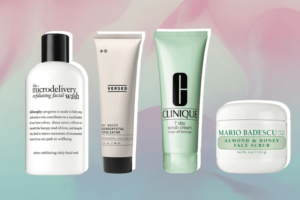The ongoing holiday sale has revealed a lot of insights regarding U.S consumer shopping behavior trends for both offline and online retail shopping. Various men and women were surveyed and they were of diversified ethnicity to keep the survey applicable for a broad spectrum of people. Today we are here to take note of all trends in online shopping apps, websites, and offline too.
Let us begin:
-
Table of Contents
Offline Shopping due to Covid-19 Concerns:
Covid-19 had boosted people’s confidence to shop online due to fear; both men and women equally were responsible for a rapid increase in online shopping numbers but what were the reasons that made them shop online was surprising. About 57 percent of women shoppers choose to shop online due to their preferred product being unavailable offline.
About 51 percent of women preferred online shopping due to them expecting a long line during checkout at a retail store. Younger women specifically were less concerned about Covid-19 while shopping in-store. For 71 percent of men, it was due to Covid-19 health safety reasons due to which they choose to shop online.
-
Bargain Hunters:
This was the primary reason people before the pandemic used to shop, but now ‘bargain hunters’ have switched to online shopping due to the added factor of convenience. According to the survey conducted by us among 1,200 US shoppers, 70 percent of them said that they shopped online due to convenience and not because of low prices. It was only 36 percent of them that did shop online since the prices were lower there.

-
Delivery Preferences:
It was seen that people regardless of their age had a specific demand of picking up their orders either from curbside or in-store. Meaning people were ordering online but taking the delivery physically at the store. This could be because they need the product as soon as possible since shipping times were marginally higher this year or due to other factors.
-
Younger People Shopping:
It was seen that millennials and younger people were more tech-savvy and chose to shop via mobile applications and websites when compared to the slightly older generation of people. Gen Z(those born between 1997 to 2012) were however shopping fewer than millennials in the online category. It was people in the 25 to 44 age category who shopped most online. While it was the youngest (people aged 18 to 24 years) and oldest(aged 54 plus) who still preferred to shop offline in stores.
Diving deep into this data shows that, 45 percent of people in the age category 35 to 44 year old preferred to shop using websites compared to 23 percent of people in the age category 25 to 33 who likes to shop using mobile applications.
-
Men’s Vs Women’s Shopping Preferences:
It was seen that men mostly(67 percent) preferred to buy household essentials online than women. Also, 46 percent of men admitted to having bought home furnishings online rather than offline, the majority of women however still preferred to shop both these items offline in the store. Regarding shopping for electronics 64 percent of men were willing to shop for it online when compared to the number of women ready for that.
-
Data Privacy Concerns:
Shoppers, regardless of their gender and age, have expressed their deepest concerns regarding how companies are handling their data even though they continued to shop online but were still concerned. They were also concerned about how this data is shared among the companies and how socially responsible are companies being with them.
It was about 45 percent of men who were concerned more than women(42 percent) about data privacy issues. They are now more knowledgeable and aware of how their online lives were being tracked by big tech companies like Google and Meta(Facebook) and sold to advertisers.

-
Daily Shopping:
Regarding shopping for daily groceries people still preferred the feel and touch method of the offline shopping format. Household essential items continued to lead with 83 percent majority ‘grab and go’ was still the most trending theme. Fashion and items of clothing were still being majorly bought by people in-store than online. Women(73 percent) particularly preferred to shop for this in-store than men.




Add Comment